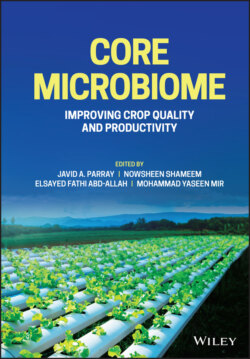Читать книгу Core Microbiome - Группа авторов - Страница 24
2.3 Plant–Microbe Interaction in the Endosphere
ОглавлениеPlants develop an association with their surrounding ecosystem to thrive in their natural environment. The most common type of association is the plant–microbe association, where the indigenous microbes help plant survival in biotic and abiotic stress. The plant endosphere consists of complex microbial communities whose function ranges from mutualism to pathogenicity. These microorganisms colonize at least a part of their life inside the plant interior and are termed “endophytes” [44]. While living near plant hosts, endophytic bacteria exchange for a consistent nutrient supply exerts a beneficial effect [45]. For establishing an asymptomatic association with the host plant, the endophyte must avoid triggering the plant’s defense system, which is achieved by maintaining low cell densities. Colonization of endophytes involves competition in the plant rhizosphere for space and nutrients, which is assisted by the production of polysaccharides and motility. Once they are established in the rhizosphere and rhizoplane, they make their way in by producing adhesion molecules and ultimately gain entry into the root by an active (low levels of cell-wall degrading enzymes) or passive (through cracks in roots) process [46]. After entering the roots, they migrate to above-ground plant tissue through the plant transpiration stream. Movement through intercellular spaces requires cell-wall degrading enzymes. However, migration through the xylem element occurs through perforated plates [47].
